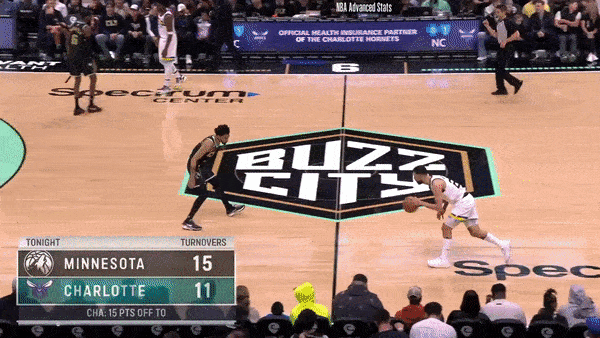Straight Sets: Expanding The Split Action
Breaking down how Minnesota have used split actions for profit lately.
The Minnesota Timberwolves haven’t been the offensive juggernaut that logic suggested they would be heading into this season. For much of the rickety campaign, they haven’t even been a middle of the pack offense that we all would have been mildy disappointed with. It hasn’t been consistent woefulness, it’s just been ebbs and flows. Peaks and valleys. Consistent inconsistencies.
That vacillation hasn’t been without legitimate excuses. A slow start from everybody on the roster, a still-lingering calf injury to what has long been their offensive hub in Karl-Anthony Towns, and an adjustment period to playing with and maximizing Rudy Gobert that continues to mosey around even now.
And those excuses have blunted head coach Chris Finch’s offensive ethos. The randomness and controlled chaos that he preaches has too often been fraught and timidly executed by players who don’t harmonize with those mantras.
But Finch, his coaching staff, and the players (especially as they have begun to regain health and weave trade deadline additions into the mix) have always been able to scramble a defense with a set play. Lately, they’ve leaned more and more into split actions to enact that scrambling. And it’s been working.
It’s not a new idea. It’s not Finch breaking ground and finding some sort of unique gem in the depths of the season’s mineshaft. Split action is something that has been drifting around the league landscape for eons and it’s tenor was the glistening jewel in the Golden State Warriors dynasty crown.
At its most basic, it’s a three-player action that revolves around a back-to-the-basket high post player and two scoring avenues branching off that post player. With each player standing on either side of the back-to-the-basket prong with the ball, they ‘split’ by crossing paths with each other (usually with a quick screen included), allowing both players to be on the move and forcing defenses to switch quickly or pay the price.
As you can see, the Wolves have been sprinkling split actions into their offensive diet for almost the entirety of the season. Lately, however, that sprinkling has turned into more of a peppering. That increased frequency has allowed more versatility, counteractions and wrinkles to sprout forth from it.
The Wolves have found some success running simple split actions to get Anthony Edwards careening downhill from a longer runway — and anything where that is the case will always be tough to guard — but as the season wears on those actions need to be diversified and expanded.
For Minnesota, that started with forcing defenses not just to switch on the perimeter, but to navigate a rolling big man, as well. Instead of the three-player action essentially just becoming a game of stopping the two perimeter splitters, having the original handoff initiator become a roll-man threat forces the defense to make more decisions and make them quicker.
Now the Sacramento Kings are in rotation. The three players on the ball don’t react quickly enough, the low-man is forced to help as Kyle Anderson ducks out of the handoff toward the rim, and Rudy Gobert can lumber from the dunker’s spot into the dunker’s dunk. And whenever Gobert can be a play-finisher, his value on this team skyrockets.
Keep reading with a 7-day free trial
Subscribe to Howls and Growls to keep reading this post and get 7 days of free access to the full post archives.






